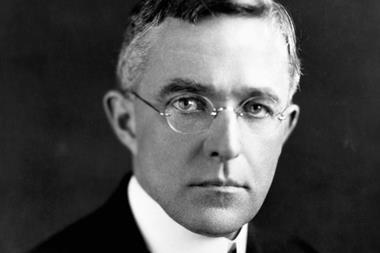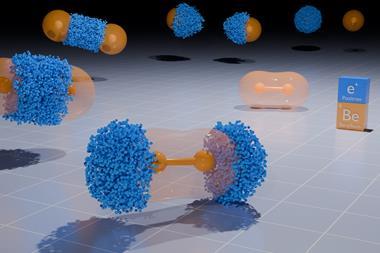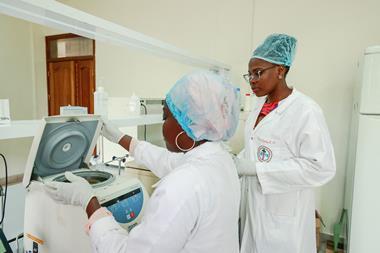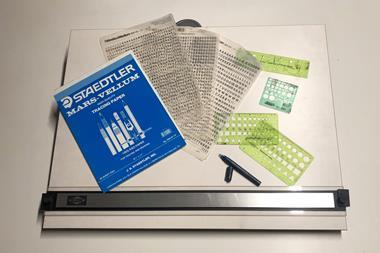A reader argues for greater use of quantum chemistry in Iupac definitions
Bonding definitions
As the principal professional organisation for standardisation in chemistry, the International Union for Pure and Applied Chemistry (Iupac) commissioned a special committee in 2004 to deal with numerous issues surrounding proper definition of hydrogen bonding, a phenomenon first recognised more than a century ago and subject of definitional-type controversies ever since.
According to a recent Chemistry World article, Iupac’s commitment to create a logically and operationally consistent dictionary of chemical terminology continues to ‘struggle’ in attempts to clarify ‘the terminology of secondary bonding interactions after decades of confusion and misuse’
Iupac’s self-proclaimed raison d’être for formal engagement in standardisation of chemical language properly emphasises the need for well-defined nomenclature that facilitates clear and reliable communication between researchers. The Iupac ‘Gold Book’ compendium of chemical terminology, initiated nearly four decades ago, strives for entries that are logically consistent with one another and their shared terms of reference, as well as operationally consistent with currently accepted research methodology.
This latter requirement implies provision for definitional readjustments as research methodologies advance. Indeed, major leaps in chemical understanding were often instigated by specific advances in experimental methodology, such as those associated with the widespread adoption of x-ray, UV/vis, microwave/IR and nuclear magnetic resonance spectroscopy methods in the 20th century.
By far the most important methodological advance of the 20th century was that associated with the 1925 discovery of the Schrödinger equation and subsequent tools for its numerical solution. Indeed, the discovery of quantum mechanics initiated a veritable revolution in the logic and linguistics of the physical and chemical sciences, upending the conceptual hegemony of ‘classical’ precepts of Newtonian mechanics and Maxwellian electromagnetism.
Under the leadership of Linus Pauling, the emergent molecular structural concepts of August Kekulé and Gilbert Lewis were unified under the rubric of Werner Heisenberg’s quantum-mechanical ‘resonance’ concept to build a sweeping new view of ‘the nature of the chemical bond’ that transcended the localised Lewis-structural picture to form the foundational basis for chemical pedagogy to the present day. The unprecedented shift in scientific logic to the quantum chemical regime of electronic interactions also mandated numerous terminological shifts in everyday chemical communication (resonance, hybridisation, orbital, conjugation, hyperconjugation) that would have been incomprehensible to pre-1925 chemical practitioners.
However, full methodological and terminological shifts to quantum-based chemical logic were severely inhibited by two circumstances.
Firstly, Pauling persistently applied resonance-type quantal conceptions only to the ‘primary’ 2-centre/2-electron electronic interactions within molecules, whereas residual ‘secondary’ interactions between molecules were attributed to dipole-dipole and related multipole interactions of classical electrostatics. Pauling’s bifurcation of electronic interaction phenomena into disparate primary (covalent, intramolecular, quantal) versus secondary (non-covalent, intermolecular, classical) regimes runs counter to coherent understanding of chemical reaction phenomena, which intrinsically involve shifts of primary bonding pattern. Such bifurcation also runs persistently afoul of a logically consistent conception of hydrogen bonding (and related X-ogen bonding), whose chemical importance gains ever-increasing recognition and continues to befuddle Iupac definition efforts to the present day.
Secondly, the crude numerical reliability of then-available quantum chemistry methods inhibited significant practical usage of such methodology in the decades following the discovery of Schrödinger’s equation. Even as late as the 1987 Gold Book inception, the numerical accuracy of available approximations to solutions of Schrödinger’s equation lagged far behind that necessary to gain regular usage in the methodological toolbox of most research chemists. Nearly four decades later, that situation has changed materially.
Nowadays, an experimental research study reporting results of broader chemical interest is expected to include modern density functional-theoretic (DFT) or other state-of-the-art computational quantum chemistry results for critical numerical comparisons with measured laboratory values and/or coherent theoretical analysis for the experimental observations. In this sense, modern quantum chemical numerical and analysis results have become integral components of ‘currently accepted research methodology’. As such, these quantum chemical results warrant equal or superior weighting in the deliberations of Iupac Gold Book definitional revisions compared to the empiricism-laden pre-1987 (or pre-1925) terms-of-reference to which later revisions of the Gold Book appear inextricably tethered.
It should be clear to all concerned that current DFT results ‘know’ more about chemistry (that is, about accurate solutions of Schrödinger’s equation) than did the most eminent chemical theoreticians of the pre-1987 or pre-1925 eras. Consensus methods for computing converged DFT solutions and extracting their optimised chemical descriptors should therefore take precedence over empiricism-laden conceptions of electronegativity from past eras.
The collective human effort invested in obtaining empirical averages for the huge number of electric dipole moment measurements that underlie the compilation of Pauling-scale values of atomic electronegativities is indeed impressive. However, it must be recognised that alternative electronegativity scales (Mulliken, Allred–Rochow, Sanderson, Allen) have as much (or little) claim to be considered as a fundamental ‘atomic property’ with Iupac-style definitional status. Moreover, for any chemical species beyond simple diatomics, the overwhelming current expectation is that any commonly used DFT-level calculation will successfully predict the dipole moment and other measurable properties of the electron density distribution with far greater fidelity than could any conceivable AI- or human-concocted predictive scheme based on purported fundamental atomic descriptor values.
Similar remarks (with still greater emphasis) apply to nucleophile and electrophile assignments. Consensus methods for extracting the atomic charges and other electronic descriptors from current DFT or ab initio calculations would surely have far superior utility for consistently predicting and rationalising the secondary bonding phenomena that befuddle current Iupac efforts.
Let’s give fundamental quantal descriptors from modern quantum chemical calculations a place at the Iupac table!
Frank Weinhold
Via email
Chemistry World welcomes letters, which should be concise (normally fewer than 300 words) and timely. Those selected for publication are subject to editing for clarity and length. Letters should be marked ‘for publication’ and sent to chemistryworld@rsc.org
We do not routinely acknowledge letters.












No comments yet